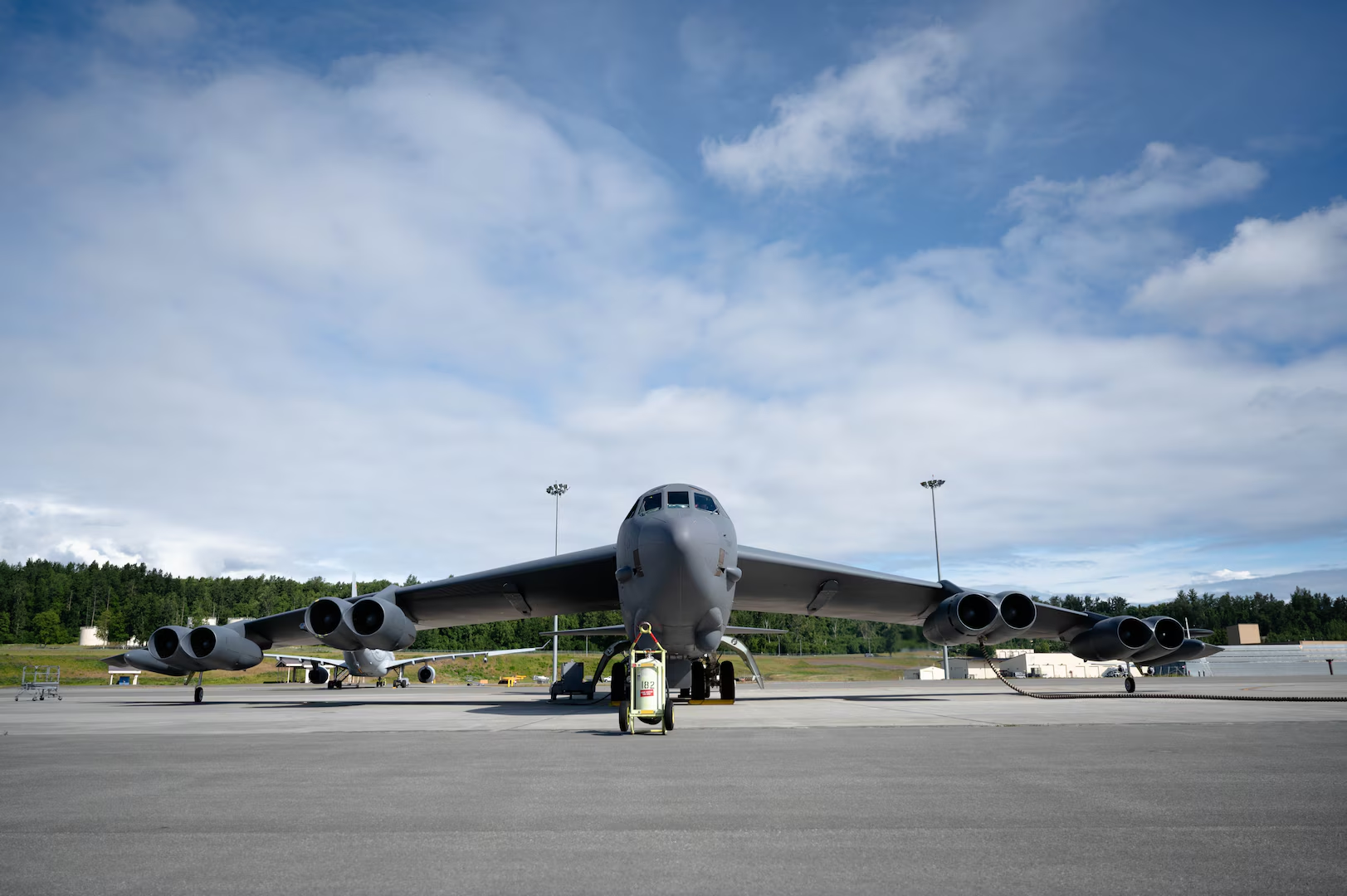In a rare deployment to Alaska’s airspace, two B-52 Stratofortresses from Minot Air Force Base, North Dakota, recently took part in the Arctic Defender exercise at JBER marking a significant milestone in military cooperation and readiness.
U.S. Air Force Capts. David Mills and Shinryu Aoyama, both from Minot’s 69th Bomb Squadron, shared insights into their experience during the mission.
“It’s not every day that a B-52 comes up to Alaska airspace and takes part in an exercise,” said Mills, highlighting the unique nature of the deployment.
Despite challenging weather conditions, which included rain and dreariness, the crew found the opportunity valuable for training and operational readiness.
Mills, serving as a B-52 flight lead and instructor pilot, along with Aoyama, a B-52 co-pilot, emphasized the exercise’s importance in refining their operational capabilities, especially given ongoing runway repairs at Minot.
The B-52 crews used Arctic Defender to integrate large-force employment into Exercise Agile Warbird, a Minot AFB Agile Combat Employment exercise.
“The B-52 was part of the strike package for the Arctic Defender [sortie] on [July 16],” explained Aoyama. Their ACE exercise focused on enhancing operational agility and effectiveness in challenging environments.
The planning and execution of the ACE exercise involved meticulous coordination with various units and personnel in order to effectively launch from Spokane, Washington, to join U.S. and Allied forces in the Joint Pacific-Alaska Range Complex.
“We had to coordinate with folks like the aircraft maintenance squadrons and aerospace ground equipment to ensure we had everything needed to operate from a forward operating base,” Mills elaborated.
Moreover, the integration with allied forces added another layer of complexity and learning. Aoyama highlighted the experience of working alongside German tactical air command and coalition nation fighters, stressing the importance of collaborative efforts in a multinational context.
“One of the key takeaways from this exercise was the seamless integration and operational synergy with our allies,” said Mills. “It’s crucial for the bomber community to foster collaboration, particularly as we prepare for high-end scenarios in the Pacific region.”
The crew also faced logistical challenges typical of such exercises, including adapting to dynamic mission changes and coordinating real-time data updates while in flight.
“It’s challenging to get all the data you need to employ when the mission planning cell is planning the [sortie] at the same time you’re in the air,” Mills explained.
Reflecting on their achievements during the exercise, both captains highlighted the successful execution of the hub-and-spoke mission concept, which involved taking off from Spokane and operating out of Alaska’s airspace.
“The experience gained during the ACE exercise and being a hub-and-spoke mission was a big win for the crew,” Aoyama noted.
Mills expressed gratitude for the opportunity to operate out of Alaska, emphasizing its significance for their professional growth and readiness.
“It really feels full circle for me,” said Mills, who was raised in Alaska and learned to fly with the Aero Club on JBER.
The B-52 crew’s participation in Arctic Defender not only underscored the strategic importance of U.S. armed forces in Alaska, but also showcased the United States’ commitment to enhancing military readiness through multinational exercises. With ongoing challenges and evolving scenarios, exercises like Arctic Defender continue to serve as pivotal training grounds for preparing the next generation of Air Force leaders and operators.
“This exercise had a massive impact for the bomber community at large, said U.S. Air Force Lt. Col. Joseph Cangealose, the 69th BS commander. “We have the capability to take a 60-plus-year-old jet and fly it three days in a row supporting multiple combatant commands.”
“I’m extremely proud of my aircrew and the maintenance professionals that made this possible,” he said.





